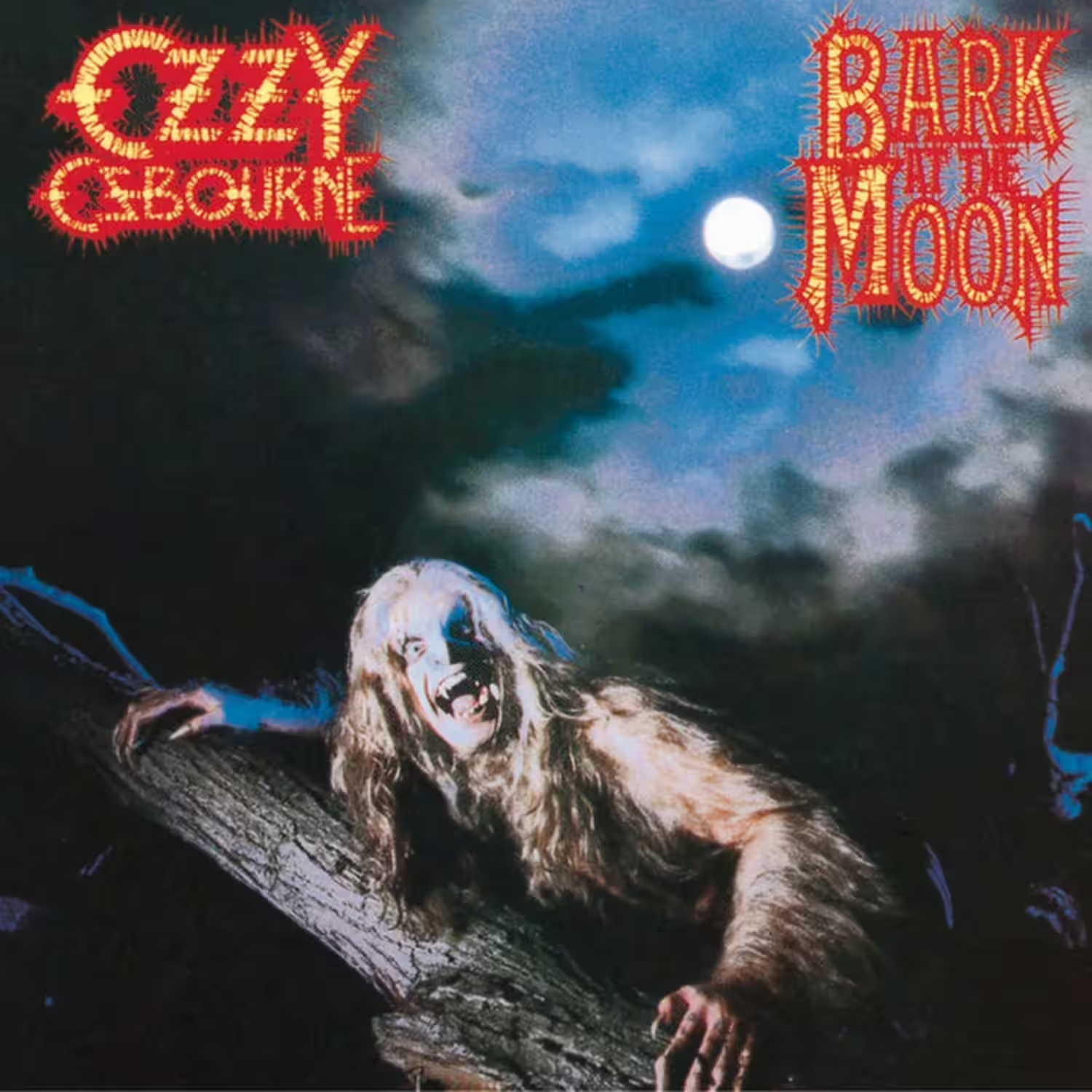
Introduction
Released in the midst of a turbulent period for Ozzy Osbourne, Bark at the Moon marked a significant turning point in the Prince of Darkness’s career. The album, which hit the shelves on 18 November 1983, was a bold statement of resilience and creativity following the tragic death of his guitarist Randy Rhoads. With its heavy metal and hard rock influences, the album became a defining moment in the evolution of Osbourne’s solo career, showcasing his ability to adapt and thrive in the face of adversity.
This article delves into the genesis, recording process, commercial performance, and legacy of Bark at the Moon, providing a comprehensive look at one of Ozzy Osbourne’s most significant works. From its creation in the serene confines of Ridge Farm Studio to its impact on the music industry, every facet of the album is explored to provide an authoritative resource for fans and historians alike.
| Attribute | Details |
|---|---|
| Release date | 18 November 1983 |
| Album title | Bark at the Moon |
| Genre | Heavy Metal, Hard Rock |
| Total runtime | 39:31 |
| Number of tracks | 9 |
| Record label | CBS Associated (US), Epic (UK) |
| Recording studio | Ridge Farm Studio, Rusper, England |
| Producer(s) | Bob Daisley, Max Norman |
The album’s significance is underscored by its commercial success and the introduction of guitarist Jake E. Lee, who brought a fresh sound to Osbourne’s music. As Osbourne himself reflected, “It was a challenging time, but we made something special.” The record not only cemented his status as a solo artist but also influenced countless musicians in the metal genre.
The Genesis of “Bark at the Moon”
The early 1980s were a tumultuous time for Ozzy Osbourne, marked by personal and professional upheavals. The tragic death of guitarist Randy Rhoads in 1982 left a void that was hard to fill. Yet, amidst this turmoil, Osbourne found a new direction with Bark at the Moon. The album emerged from a landscape of shifting musical tastes, where heavy metal was gaining mainstream traction.
Prior to this album, Osbourne had already established himself as a formidable solo artist with albums like Blizzard of Ozz and Diary of a Madman. These records not only set the stage for his solo career but also influenced the musical direction of Bark at the Moon. The album saw the introduction of Jake E. Lee, whose guitar work added a new dimension to Osbourne’s sound.
The creative team behind the album was instrumental in its success. Alongside Osbourne, bassist Bob Daisley and producer Max Norman played key roles in shaping the album’s sound. Daisley, who had been a part of Osbourne’s earlier successes, contributed significantly to the songwriting and production process.
The following table lists the band members and their respective instruments:
| Band Member | Instrument/Role |
|---|---|
| Ozzy Osbourne | Vocals |
| Jake E. Lee | Guitar, Backing Vocals |
| Bob Daisley | Bass, Backing Vocals |
| Tommy Aldridge | Drums |
| Don Airey | Keyboards |
Financing the album was a complex affair, largely managed by Osbourne’s wife and manager, Sharon Osbourne. The total budget for the recording was substantial, reflecting the high stakes involved in producing a follow-up to Osbourne’s earlier successes. Despite financial challenges, the team was able to deliver an album that resonated with fans and critics alike.
The album’s title and artwork drew inspiration from classic horror themes, a nod to Osbourne’s theatrical persona. The cover, featuring Osbourne as a werewolf, was designed by the renowned artist Fin Costello. This imagery complemented the album’s themes and contributed to its lasting appeal.
Recording Process
Recording Bark at the Moon was an intense and meticulous process. The sessions took place at Ridge Farm Studio in Rusper, England, a location known for its serene environment and state-of-the-art facilities. The studio, set in a 17th-century farmhouse, provided an ideal backdrop for creativity, allowing the artists to focus on their craft away from the distractions of urban life.
The recording sessions were led by producer Max Norman, who had previously worked on Osbourne’s Blizzard of Ozz and Diary of a Madman. Norman’s expertise in heavy metal production was instrumental in shaping the album’s sound. He was joined by engineers Tony Bongiovi and Malcolm Pollack, who were responsible for mixing the tracks at The Power Station in New York City.
The following table lists the likely hardware used during the recording sessions at Ridge Farm Studio:
| Equipment | Details |
|---|---|
| Microphones | Neumann U87, Shure SM57 |
| Mixing Desk | Neve 8028 |
| Compressors | Urei 1176, LA-2A |
| Guitars | Charvel, Gibson Les Paul |
| Amplifiers | Marshall JCM800 |
The recording process was not without its challenges. Osbourne, known for his larger-than-life persona, faced difficulties during the vocal sessions, particularly with the track “So Tired,” which required several takes and rewrites. Despite these hurdles, the team managed to produce a cohesive and powerful album.
Bob Daisley and Max Norman’s contributions to the music industry are extensive. The following table lists some of the albums they have produced:
| Producer | Artist | Album | Year |
|---|---|---|---|
| Max Norman | Ozzy Osbourne | Blizzard of Ozz | 1980 |
| Max Norman | Megadeth | Rust in Peace | 1990 |
| Max Norman | Megadeth | Countdown to Extinction | 1992 |
Commercial Performance and Reception
Bark at the Moon was a commercial triumph, solidifying Ozzy Osbourne’s status as a solo artist. The album peaked at number 19 on the Billboard 200 chart and quickly achieved gold certification, eventually reaching triple platinum status in the United States. Its success was mirrored internationally, with significant sales in the UK and Canada.
The following table summarizes the sales data for Bark at the Moon and other Ozzy Osbourne albums:
| Album Title | Sales | Year Released |
|---|---|---|
| Bark at the Moon | 3,195,000 | 1983 |
| Blizzard of Ozz | 5,255,000 | 1980 |
| Diary of a Madman | 3,600,000 | 1981 |
Upon its release, the album faced stiff competition from other heavy metal and rock albums. In 1983, notable releases included Pyromania by Def Leppard and Piece of Mind by Iron Maiden, both of which performed well commercially and critically. However, Bark at the Moon distinguished itself with its unique blend of metal and pop influences.
- Pyromania by Def Leppard [10 million]
- Piece of Mind by Iron Maiden [Physical Sales not specified]
In terms of accolades, Bark at the Moon received a silver certification in the UK and a platinum certification in Canada. Its enduring popularity is a testament to its impact on the music industry and its fans.
Singles and Track Analysis
The singles from Bark at the Moon played a crucial role in the album’s success, showcasing Ozzy Osbourne’s ability to craft memorable and impactful songs. The title track, “Bark at the Moon,” was released as the lead single, followed by “So Tired.” Both tracks received considerable airplay and contributed to the album’s commercial performance.
The following table provides an overview of the album’s tracks, their lengths, and songwriting credits:
| Track Name | Length | Writing Credit |
|---|---|---|
| Bark at the Moon* | 4:16 | Ozzy Osbourne |
| You’re No Different | 5:02 | Ozzy Osbourne |
| Now You See It | 5:10 | Ozzy Osbourne |
| Rock ‘n’ Roll Rebel | 5:23 | Ozzy Osbourne |
| Centre of Eternity | 5:15 | Ozzy Osbourne |
| So Tired* | 3:59 | Ozzy Osbourne |
| Slow Down | 4:19 | Ozzy Osbourne |
| Waiting for Darkness | 5:15 | Ozzy Osbourne |
| Spiders | 4:20 | Ozzy Osbourne |
| One up the ‘B’ Side | 3:23 | Ozzy Osbourne |
* Note: “Bark at the Moon” and “So Tired” were released as singles. “Bark at the Moon” reached number 12 on the Mainstream Rock Tracks chart.
Influences and Legacy
The musical influences that shaped Bark at the Moon are as diverse as they are impactful. Drawing from the hard rock and heavy metal sounds of the late 70s and early 80s, the album incorporates elements from artists like Alice Cooper and Black Sabbath, blending them with the burgeoning glam metal scene.
The following table outlines the influences on the album and the artists who were subsequently inspired by it:
| Influences on “Bark at the Moon” | Artists Influenced by “Bark at the Moon” |
|---|---|
| Alice Cooper | Metallica |
| Black Sabbath | Slipknot |
Released in 1983, the album coincided with significant global events and cultural shifts. The year saw the introduction of the first mobile phone, the Motorola DynaTAC, and the release of iconic films like Return of the Jedi. These cultural milestones paralleled the innovative spirit of Bark at the Moon, which pushed the boundaries of heavy metal music.
Five Things about Bark at the Moon
Delving into the album’s rich history, here are five intriguing facts about Bark at the Moon:
| Fact | Details |
|---|---|
| Songwriting Controversy | Guitarist Jake E. Lee and bassist Bob Daisley claimed they were not properly credited for their songwriting contributions. |
| Unique Album Cover | The album cover features Ozzy Osbourne as a werewolf, reflecting his fascination with horror themes. |
| First Music Video | “Bark at the Moon” was the first Ozzy Osbourne single to have a music video, which received significant airplay on MTV. |
| Commercial Success | The album sold over 3 million copies in the United States alone, achieving triple platinum status. |
| Recording Challenges | Vocal sessions for “So Tired” were particularly challenging, requiring multiple takes and rewrites. |
Media and Television Usage
Despite the album’s significant impact, there are no documented uses of songs from Bark at the Moon in media such as films or television shows.
Critical Reviews and Retrospectives
Upon its release, Bark at the Moon received mixed reviews, with critics praising its energy and production while critiquing its use of synthesizers. Over time, the album has been re-evaluated, with many acknowledging its role in shaping the 80s metal scene.
The following table summarizes critical reviews and notable quotes:
| Publication | Review Score | Notable Quotes | Source |
|---|---|---|---|
| Ear of Newt | Balanced | “A satisfactory addition to Osbourne’s discography.” | Ear of Newt |
| Encyclopaedia Metallum | 95% | “A successful embrace of the 80s metal sound.” | Encyclopaedia Metallum |
After Bark at the Moon
Following the release of Bark at the Moon, Ozzy Osbourne continued to evolve as an artist. The album set the stage for subsequent releases like The Ultimate Sin and No Rest for the Wicked. Despite facing lineup changes and personal challenges, Osbourne maintained his popularity, becoming a staple of the heavy metal genre.
As of October 2023, Osbourne remains an influential figure in music, recently being inducted into the Rock and Roll Hall of Fame as a solo artist. His legacy continues to inspire new generations of musicians.
Remasters and Reissues
The enduring popularity of Bark at the Moon has led to several remasters and reissues, ensuring that new audiences can experience its impact. These editions often include remastered audio and bonus content.
The following table lists the remasters and reissues of the album:
| Edition | Format | Additional Content |
|---|---|---|
| 1995 Remaster | CD | Remastered Audio |
| 2002 Reissue | CD | Alternate Mixes |
| 40th Anniversary Edition | Vinyl | Translucent Cobalt Blue Vinyl, Poster |
Conclusion
Bark at the Moon remains a pivotal album in Ozzy Osbourne’s discography, celebrated for its innovation and resilience. Its influence on the heavy metal genre is undeniable, and its themes continue to resonate with fans worldwide. As we reflect on its legacy, it’s clear that the album’s impact will endure for years to come.
Further Reading:
- The Making of The Ultimate Sin by Ozzy Osbourne (Our Blog Article)
- The Making of Diary of a Madman by Ozzy Osbourne (Our Blog Article)
- The Making of No Rest for the Wicked by Ozzy Osbourne (Our Blog Article)
- Wikipedia page for “Bark at the Moon”
- Official Ozzy Osbourne website
- Epic Records website
Let us know in the comments what your thoughts are on Bark at the Moon by Ozzy Osbourne. Did we miss anything? Share your experiences and join the conversation!




